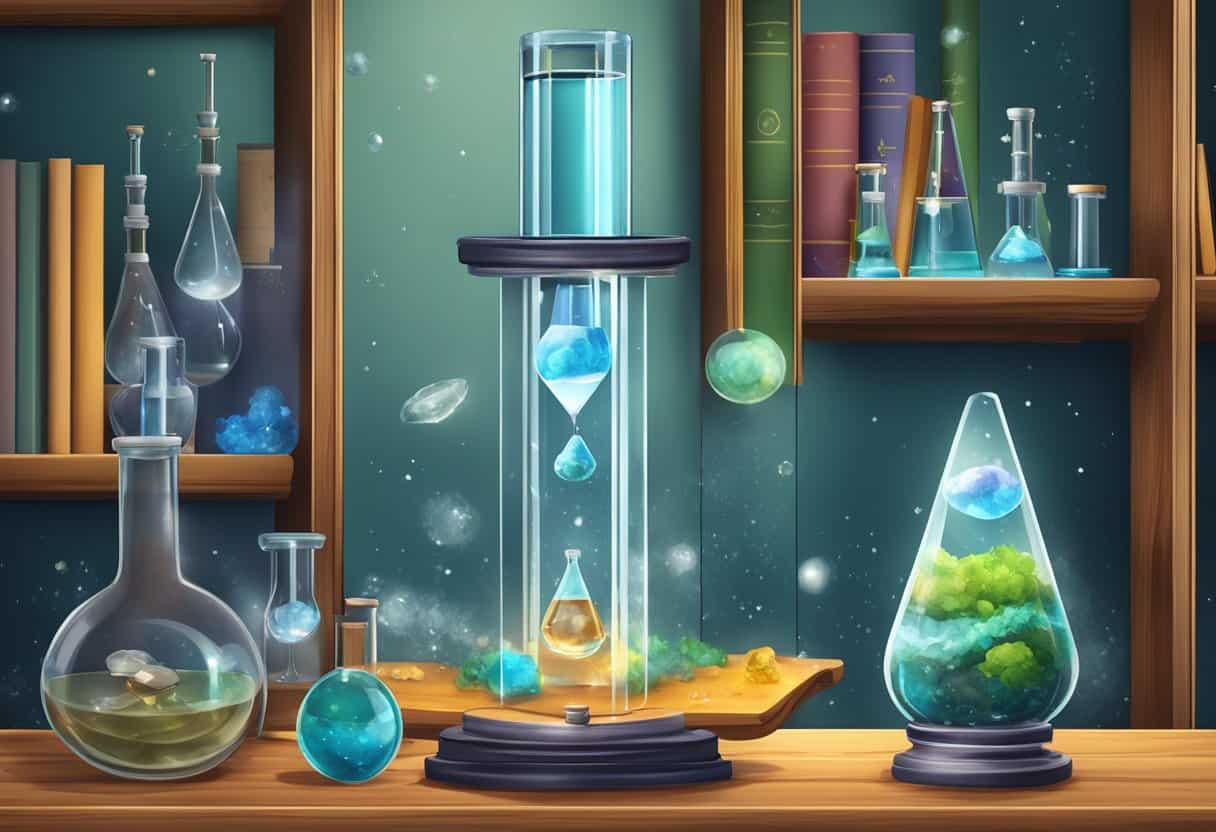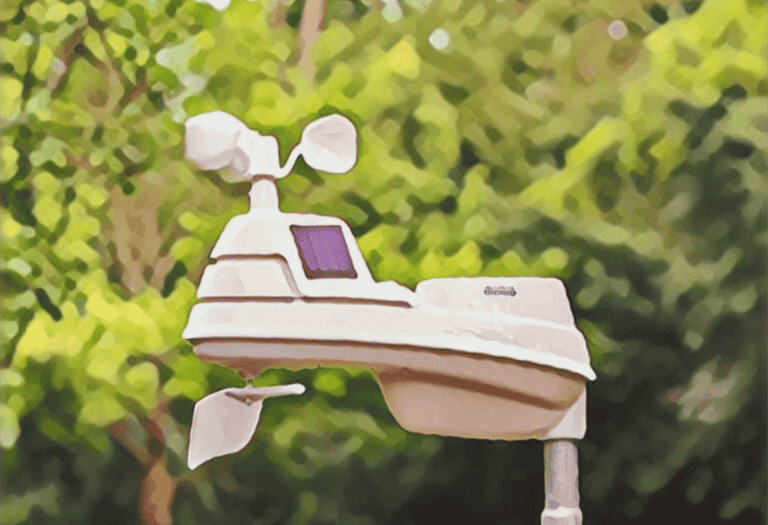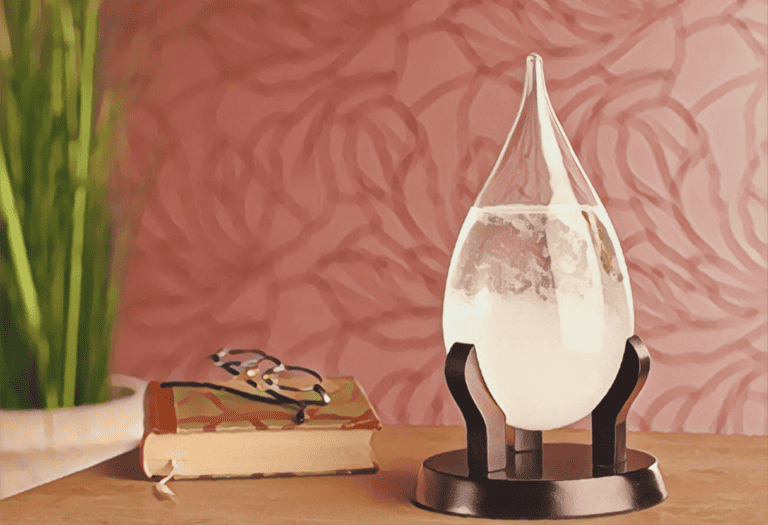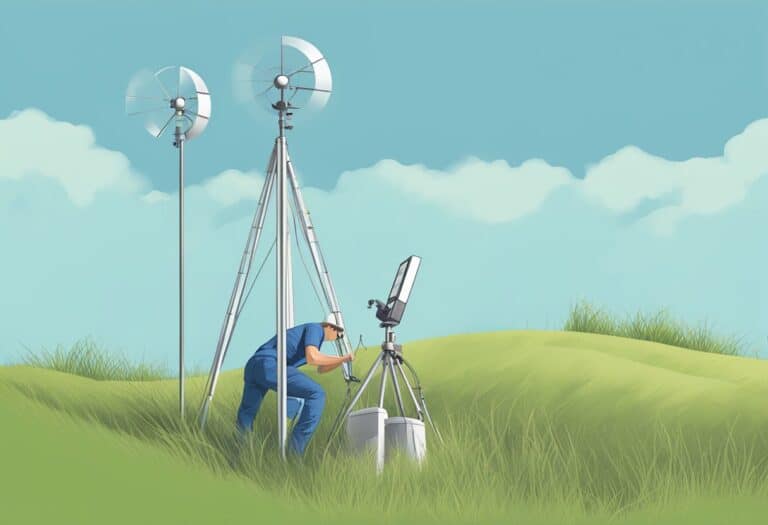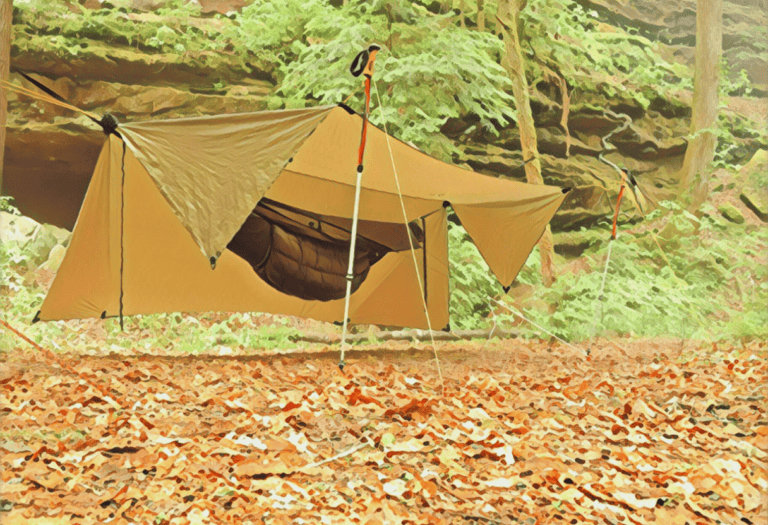A storm glass is an intriguing weather forecasting device that traces its roots back to the 19th century. It consists of a sealed glass container filled with a mixture of chemicals that respond to changes in the environment.
The appearance of the crystals within the container is said to predict the weather; clear liquid for fair weather, cloudy liquid possibly indicating rain, and flakes suggesting snow or frost.
Admiral Robert FitzRoy, who captained the HMS Beagle during Charles Darwin’s famous expedition, popularized the storm glass. FitzRoy was a pioneer in meteorology, and while the device’s exact inventor is unclear, the ‘Fitzroy storm glass’ was widely used by sailors under his guidance. Today, these glasses are more often viewed as conversation pieces rather than scientific instruments, as their accuracy and the underlying chemical reactions are not fully understood.
Despite its historical use, it’s important to approach the storm glass with a blend of curiosity and skepticism.
While it’s a captivating piece of meteorological history, the scientific community does not widely accept it as a reliable tool for predicting weather. Instead, the storm glass serves as a window into the past practices of weather prediction and a reminder of how far modern meteorology has advanced.
A storm glass is an antique weather prediction device, using chemical changes to forecast weather. Clear liquid predicts fair weather, while crystals suggest storms. Popularized by Admiral FitzRoy, it’s more a historical curiosity than a precise tool in modern meteorology, valued for its historical significance rather than its accuracy.
Historical Background
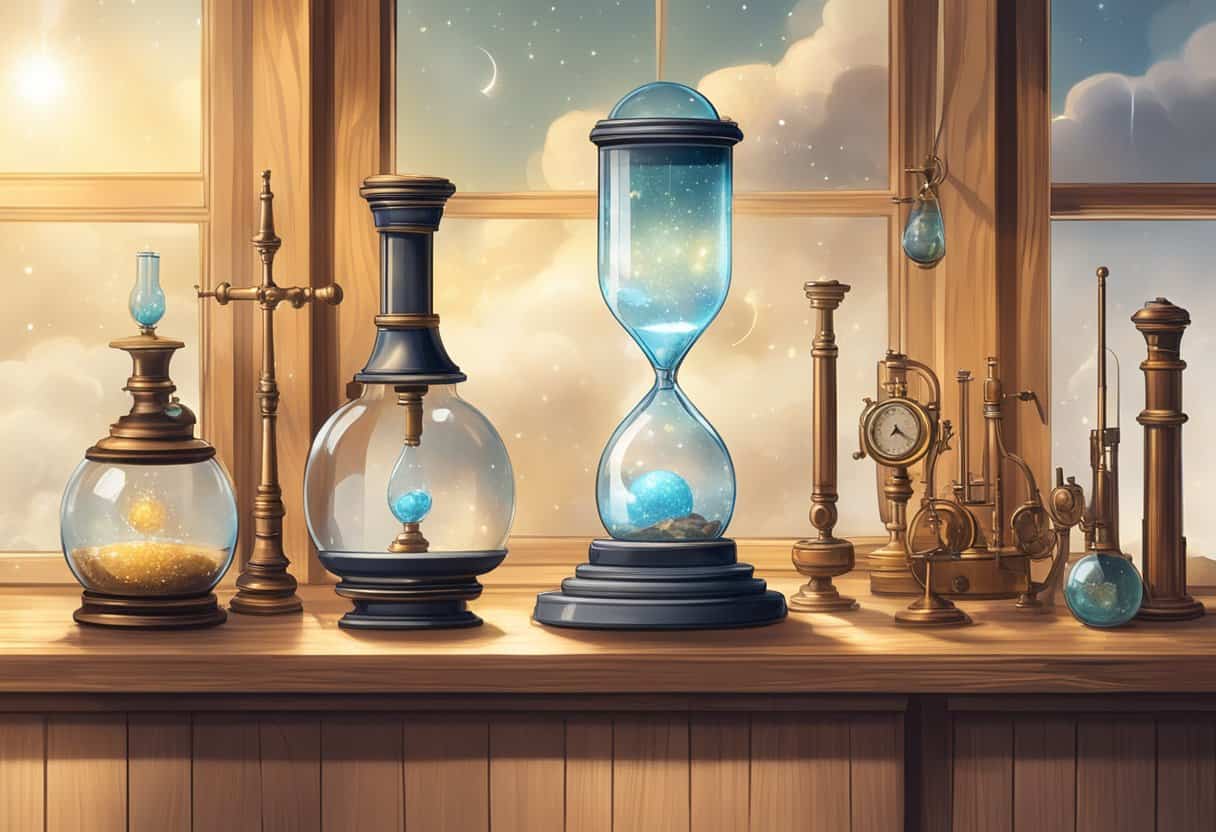
Your exploration into the storm glass begins in the past where innovation met practicality at sea. Learn how a simple instrument carved its place in maritime history and science.
Invention and Development
The storm glass was an invention that saw its design refined over time. The early versions of this weather prediction device date back to the mid-1800s. The inventor of the storm glass remains a mystery, but the device gained prominence for its presumed ability to foretell weather changes. Crystalline formations within the glass would change based on impending weather conditions, offering a practical tool for mariners.
Admiral Robert FitzRoy and the HMS Beagle
This humble instrument’s popularity surged when Admiral Robert FitzRoy, a noted meteorologist and captain of the HMS Beagle, utilized it. The Beagle is well-known for its second voyage with Charles Darwin aboard, which had profound implications on natural science. FitzRoy, who had a deep interest in meteorology, often employed the storm glass aboard the ship. He later endorsed the tool for public use, leading to its widespread distribution and association with the British Crown. FitzRoy meticulously documented changes in the storm glass alongside meteorological observations, striving to provide a reliable resource for those at sea.
Scientific Foundation and Functionality
Your storm glass is a type of chemical weather glass that uses a combination of chemicals and climatic fluctuations to predict weather patterns. The device’s predictions are based on the changes in crystal formations within its liquid.
How Storm Glasses Work
Storm glasses operate on the principle that temperature and barometric pressure influence the solubility and crystallization of the chemicals suspended in the liquid. When the atmospheric pressure changes, it affects the liquid and chemical balance leading to changes in crystal growth.
Chemicals and Reactions
A storm glass contains a mixture of camphor, potassium nitrate, ammonium chloride, distilled water, and ethanol. The camphor interacts with the potassium nitrate and ammonium chloride to form crystals at varying temperatures and humidity levels. The solute and solvent react differently to external pressures, causing different types of crystallization.
Reading the Crystal Formations
To forecast the weather, you’ll examine the crystal formations:
- Clear liquid: indicates clear weather.
- Cloudy liquid: suggests cloudy weather, potential rain.
- Small stars in winter: signify snow.
- Large flakes: can mean overcast skies and thunderstorms.
Temperature, humidity, and barometric pressure changes can result in variations in crystal growth, hinting at impending precipitation or changes in weather.
Using a Storm Glass
A storm glass is a type of weather predicting device that responds to changes in atmospheric conditions. It’s important to understand how to properly place and care for your storm glass, interpret its predictions, and recognize its modern applications.
Placement and Care
To ensure the accuracy of your storm glass, placement is crucial. Position your weather glass in a location free from direct sunlight and extreme temperature changes to maintain its chemical integrity. The glass container should be placed on a wooden base or within a protective exterior to prevent damage to the glass walls. Storm glasses are typically hermetically sealed, with a corked test tube appearance, making them more resilient to environmental factors. However, they should not be handled excessively to prevent the disturbance of the liquid inside.
Interpreting the Predictions
The liquid inside a storm glass can appear clear, cloudy, or form crystals, depending on impending weather conditions. For instance, a clear liquid signifies fair weather, whereas large flakes may suggest snow or heavy rain. The appearance of small stars might indicate thunderstorms. Unlike barometers which measure air pressure, the storm glass is more ambiguous, and changes in liquid appearance should be observed alongside other devices like a thermometer or a Galileo thermometer for cross-referencing weather predictions.
Modern Applications
Though not as accurate as modern weather stations or home weather stations, storm glasses still hold decorative and educational value. They provide a visual representation of how temperature and pressure changes can be reflected through a transparent, colorless medium. Many people enjoy using storm glasses as conversation pieces or as an introduction to atmospheric observation, facilitating interest in meteorology and related sciences.
Enhancing Weather Predictions
As you explore the functionality and heritage of storm glasses, understanding their role in modern weather prediction is crucial. These devices have a storied history, but today’s technology offers precision and analytics that redefine forecasting.
Storm Glass vs. Modern Technology
Storm glasses, once a staple in maritime weather prediction, operate on the principle that temperature change and weather conditions affect the crystallization within the mixture. Admiral Fitzroy Storm Glass, often linked to the historic voyages of Charles Darwin, was a go-to device for assessing impending weather, particularly among fishing communities in England. Although it may still be a conversation piece, modern meteorologists rely on advanced tools that deliver accurate weather forecasting. Instruments like barometers and hygrometers have taken precedence for their ability to measure air pressure and humidity, respectively. These measurements are vital to predict weather patterns with a high degree of accuracy.
The Acurite brand, for example, is known for offering a range of weather instruments that cater to both professional and hobbyist meteorologists. Even though products such as the Cape Cod Storm Glass may retain nostalgic value and serve as decorative items, the functionality of these weather predictors has been far surpassed by digital technology. It’s important for you to consider the limitations of traditional devices like the storm glass, as they may not provide the precise information necessary for making critical decisions based on weather.
Complementary Devices and Methods
In your quest to enhance weather predictions, don’t overlook the value of integrating multiple devices and methods. When a storm glass indicates a possible change due to an air bubble movement or crystal formation, it can serve as an initial alert. However, complementing this with readings from modern devices such as barometers will provide you with a more comprehensive view of the weather conditions.
It’s recommended that you purchase instruments that are backed by robust research and have a proven track record. Not only do they offer real-time weather forecasting, but they also adjust for sudden temperature changes, something that simple storm glasses cannot do. Whether you’re monitoring winds or trying to gauge storm severity, a barometer can indicate drops in air pressure, signalling that bad weather may be on the horizon. While expensive compared to basic storm glasses, the investment in quality weather instruments available on platforms like Amazon is generally justified by their superior accuracy and functionality.
If you’re looking for a device that marries aesthetics with practicality, consider the Galileo thermometer. This device, based on a design by Johann Wolfgang von Goethe, provides a visual representation of temperature changes. However, just like the mercury barometers of old, these should not be your sole resource for weather prediction. Instead, use them as part of a broader suite of tools that might also include digital forecasting products to ensure you’re prepared for any weather conditions.
Frequently Asked Questions
Understanding the functionality and safe usage of your storm glass can enhance its role as an intriguing weather prediction tool. These FAQs aim to provide insights into its operation, interpretation, and creation.
How does a storm glass function to predict weather?
A storm glass predicts weather by forming crystals in response to temperature and pressure changes. Subtle shifts in weather patterns result in various formations within the glass that can indicate upcoming conditions.
What are the safety concerns associated with the liquid inside a storm glass?
The liquid inside a storm glass typically includes chemicals like camphor and ethanol, which can be harmful if ingested or come into contact with your skin. It’s important to handle the storm glass carefully and keep it out of reach of children and pets.
Can you provide guidance on interpreting a storm glass?
Interpreting a storm glass involves observing the crystal formations. Clear liquid suggests fair weather, while cloudy liquid with small stars may indicate thunderstorms. Large flakes can denote snowy conditions in winter.
What is the composition of the liquid within a storm glass?
The liquid within a storm glass is a saturated solution typically composed of water, ethanol, potassium nitrate, ammonium chloride, and camphor. This mixture responds to external weather conditions, allowing the glass to act as a forecasting tool.
What are the steps involved in creating a homemade storm glass?
To create a homemade storm glass, you’ll need to mix the chemicals with distilled water and then seal the solution airtight within a clear glass container. This allows for undisturbed observation of crystal changes.
Does agitating a storm glass affect its predictive ability?
Agitating a storm glass can disrupt the formation of crystals, which can impair its predictive ability. For reliable interpretations, it’s best to place the storm glass in a stable location with minimal vibration.

